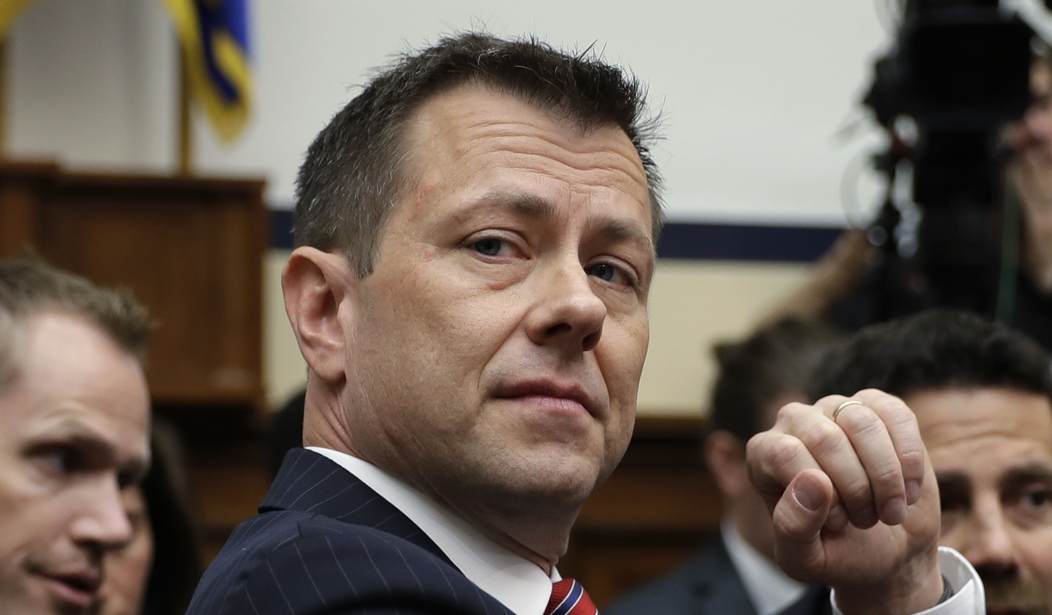The Senate Judiciary Committee has released another tranche of documents that sheds light on the origins of the FBI’s investigation into ties between the Kremlin and the Trump campaign.
There are no huge surprises but the documents will raise even more questions about just what it was the FBI was so concerned about that they turned the country upside looking for it.
There is a 57-page report on the interviews the bureau conducted with former British intelligence agent Christopher Steele’s so-called “primary sub-source” in the anti-Trump allegations. It turns out that the “sub-source” was an employee of Steele’s company. The FBI spent 3 days interviewing this “source.”
Overall, the documents reveal an FBI frantically looking for evidence of collusion and not finding any.
The documents suggest that even as press reports began to describe connections between Americans in Trump’s orbit and figures in Russia’s shadowy intelligence services, the FBI had gathered little, if any, evidence that such ties existed.
“We have not seen evidence of any officials associated with the Trump team in contact with [intelligence officers],” wrote Peter Strzok, the FBI agent who helped initiate and lead the Russia probe, in internal notes accompanying a Feb. 14, 2017, New York Times article. “We are unaware of ANY Trump advisors engaging in conversations with Russian intelligence officials.”
Those contacts, Strzok wrote, were limited to Russia’s then-ambassador to the U.S. and the Russian Embassy’s liaison to Congress.
Strzok is the former chief of the Counterespionage Section whose hysterical Trump hatred was supposedly put aside so that he could conduct a “professional and impartial” investigation. Along with his mistress Lisa Page, an FBI lawyer who shared Strzok’s animus toward Trump, Strzok drove the investigation into Russia collusion forward.
But the questions raised in these documents point to Stzok’s skepticism that any collusion existed at all.
Graham also released a 57-page memo detailing the FBI’s interview with a top source for Christopher Steele, the former British intelligence agent whose unverified dossier on Trump described a nefarious, yearslong plot to aid his election. That document, which formed part of the basis for the FBI’s surveillance of a Trump campaign adviser in 2016, was crafted largely through a network of six sources relied on by this associate of Steele’s — and some of its most explosive and salacious findings were based on thinly sourced speculation.
In his New York Times annotation, Strzok also indicated that Steele may not have been able to adequately judge whether the sources he relied on for his dossier were reliable. Strzok, who was fired from the bureau in 2018 after drawing Trump’s fury over private text messages that revealed his disdain for the president, raised strong doubts about the Times article, which described “repeated” contacts between Trump aides and Russian intelligence agents.
Meanwhile, the New York Times has a lot of explaining to do. Sheryl Atkisson savagely debunks a New York Times story from February 14, 2017, on contacts between the Trump campaign and Russian intelligence.
Claim in NYT article: “… one of the advisers picked up on the [intercepted] calls was Paul Manafort, who was Mr. Trump’s campaign chairman for several months …”
Note by Strzok: “We are unaware of any calls with any Russian government official in which Manafort was a party.”
Claim in NYT article: “The FBI has obtained banking and travel records …”
Note by Strzok: “We do not yet have detailed banking records.”
Claim in NYT article: “Officials would not disclose many details, including what was discussed on the calls, and how many of Trump’s advisers were talking to the Russians.”
Note by Strzok: “Again, we are unaware of ANY Trump advisers engaging in conversations with Russian intel officials” and “Our coverage has not revealed contact between Russian intelligence officers and the Trump team.”
The most anti-Trump official in the FBI didn’t see a connection and, in fact, saw only legitimate contacts with the Russian ambassador and congressional liaison.
This is exactly why Attorney General William Barr has tasked U.S. Attorney John Durham to get to the bottom of the origins of the Russian collusion narrative. It’s inexplicable how and why the FBI would continue an investigation into what was painfully obvious to any objective observer as a dry hole.
Simply saying, “well, they hated Trump” is not good enough. This investigation was being prodded forward by someone or some people very high in our government. The Durham investigation is well worth it if he can uncover who it was.










Join the conversation as a VIP Member